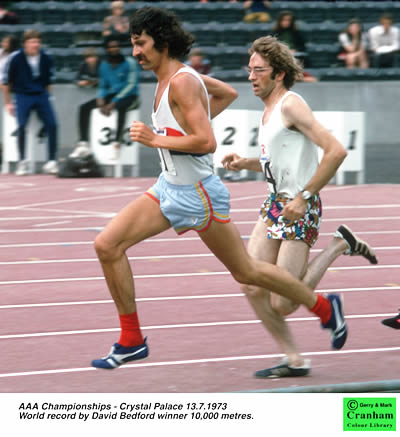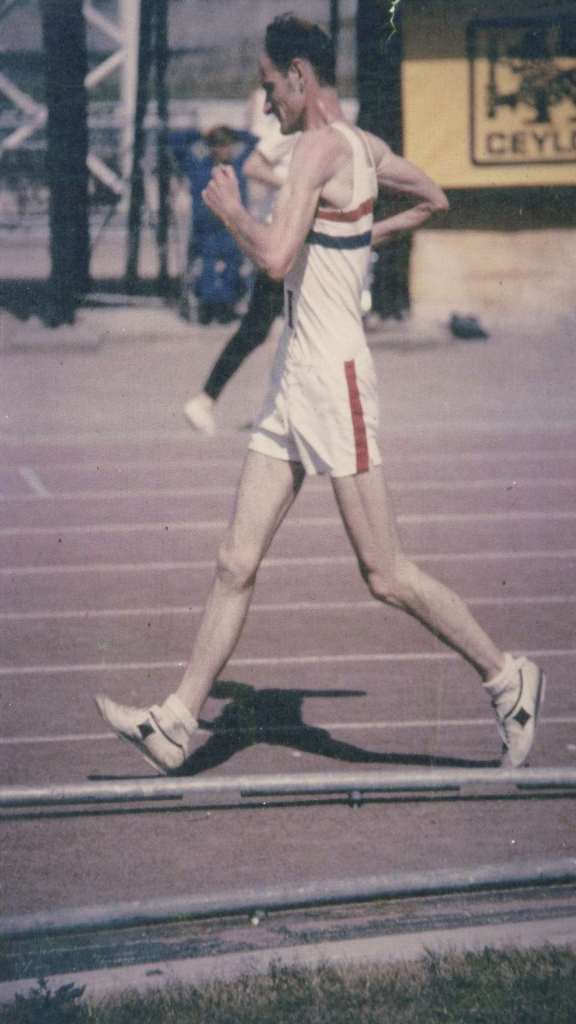Back in 1970, Julian Hopkins and I, encouraged by Ron Wallwork, pondered the idea of putting together an annual review of race walking. It was to include commentary on tthe national and international scene, together with articles on technique and training, not forgetting a statistical section. It was an ambitious undertaking, which depended on others joining in if it was to prosper. In the end we produced only one edition, ‘Race Walking ’71’.
Looking back through its contents made me think that some of the material therein might still be of some interest. Hence you will find below a piece I scribbled on the subject of RUNNING! The next article, I’ll post, penned by Julian addressed the question, ‘Is Walking Enough?’
RUNNING: A DESIRABLE ADDITION?
There has been much controversy in recent years about the role that running can play in the training regime of a race walker. Several recognised authorities, notably Lloyd Johnson, have condemned the practice in forthright terms, basing their views not only on theory, but on their own practical experience. In the case of ‘Tebbs’ Johnson there is no doubt that this great walker found the inclusion of running unsatisfactory, but to allege that this proves that it is useless for all is misguided logic. Every athlete remains an individual with his own peculiar emotional and physiological anomalies.

It is argued that the difference between running and walking precludes the intermarriage of the two movements. The supposition is made that the strengthened quadriceps derived from running have the effect of causing a bending of the knee while walking. This tenuous statement fails to recognise that running is not practised in isolation from the essential walking action. The muscles involved in the latter are consistently being used. Running merely exercises dormant sets of muscles and obviates any likelihood of over-exaggerated muscular usage in other areas. Perhaps it even contributes to exercising the leg through a wider range of movement.
It seems quite unfair to lay the blame for bent-knee walking at the door of running. How many walkers with this problem actually utilise running in their training? This fault seems to be more closely linked with the innate physical difficulties, mental fatigue or a lack of the necessary fitness desired in our event. The critics also feel that some walkers might use running as a means of quickening up their action. Such a belief is rather porous in that the free, striding motion of running affords a sensation far removed from the disciplined rhythm of fast walking.
Yet there are certain disadvantages in using running in one’s schedule. In the early days calf stiffness may be irritating, but this should pass quite quickly as the athlete’s legs accustom themselves to the new load. Also the flexibility of the hamstring may be affected by the springing action demanded in running and since a mobile hamstring is essential to the maximum extension of stride, running should not be practised at the expense of walking. Mobility exercises are a great help in retaining and furthering flexibility and thus are an important aid to successfully linking successfully the diverse elements of ‘bounding’ and ‘driving’.
Undoubtedly running is of important cardio-vascular value, but perhaps its chief benefit derives from the variety it affords to the athlete’s training schedule. Walking is the first love, but the freedom experienced in running, for example, over the country is a great elixir. Certainly it is invaluable in maintaining the psychological equilibrium essential to good performance. There are also practical advantages in the sense that running, because of its very nature, allows sessions to be fitted in during restricted time periods e.g. in the early morning or at dinnertime. Indeed it is probably in this type of session that the best rewards can be reaped with the main effort of the day being devoted to the primary mode of progression. The truth is that race walking demands the endurance qualities of distance running combined with the technical accomplishments of a field event. The necessary concentration is not always available and at such times running is of much more value physically and mentally than no effort at all. During the winter conditioning period, long runs at the weekends of the L.S.D. variety could be extremely rewarding, especially if combined with a re-emphasised training programme centred on strengthening the weaknesses of the individual athlete. Jogging on grass can also be of benefit during recovery from injury, dissipating the tension felt by an athlete whilst inactive and maintaining a level of bodily fitness.
In conclusion there is no intention in this article to attract converts to a particular training method. Athletics is too complex a subject and the athlete too much an individual to allow dogmatic views of this evangelistic kind. Running may be totally alien to many walkers, who will continue to achieve high standards without its help. The final decision lies with the individual, but at least let it be said that running could be a desirable element in some walkers’ schedules and should be given proper consideration in the preparation of training programmes.
Tony Taylor
NOTES [2024]

‘Tebbs’ Lloyd Johnson was a remarkable competitor who remained in the top flight for 25 years. After placing third in the RWA 20 miles walk in 1923, he won the title in 1927, 1931, and 1934, and was the 50K champion in 1931, 1934, and 1949. At the 1948 Olympics he won a bronze medal and, at 48 years, 115 days, he became the oldest Olympic medalist in an athletics event. His best performance came in the 1936 RWA 50K when he crossed the line 4 seconds ahead of future Olympic champion Harold Whitlock, but was disqualified for lifting in the closing stages of a dramatic finish. His time was not bettered by a British walker for 20 years. He succeeded Whitlock as National Coach and served as RWA President 1970-71 . Lloyd was much respected and is remembered with affection by young walkers of the late 60s and early 70s such as Tony Malone and myself for his fatherly and supportive advice.
L.S.D wasn’t a performance-enhancing hallucinatory drug! Less excitingly it was an acronym of the time, standing for Long Slow Distance. It was the mantra underpinning the emphasis during this period on high mileage as the key to success.





